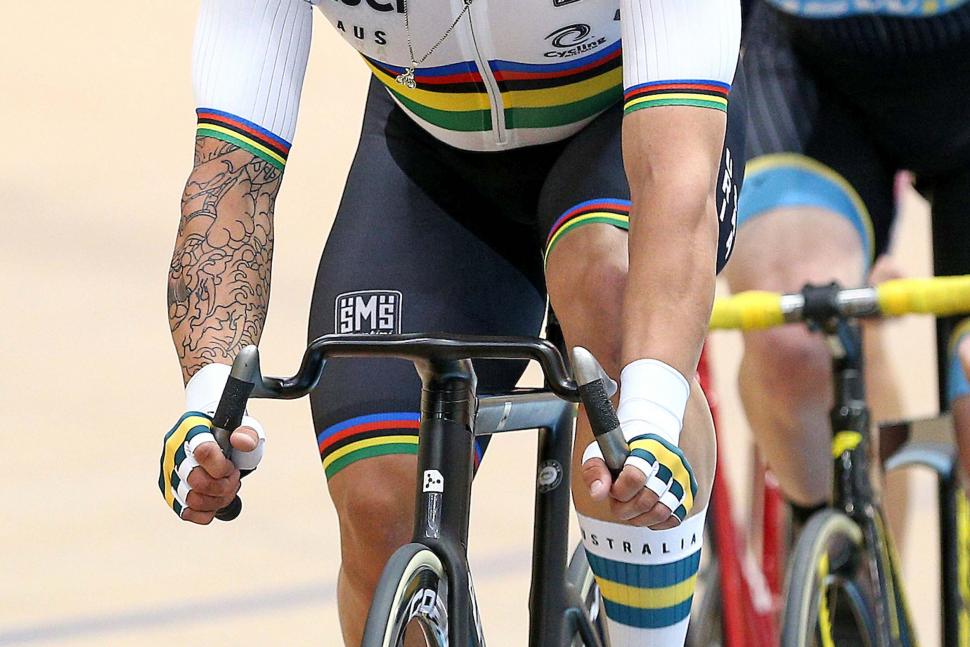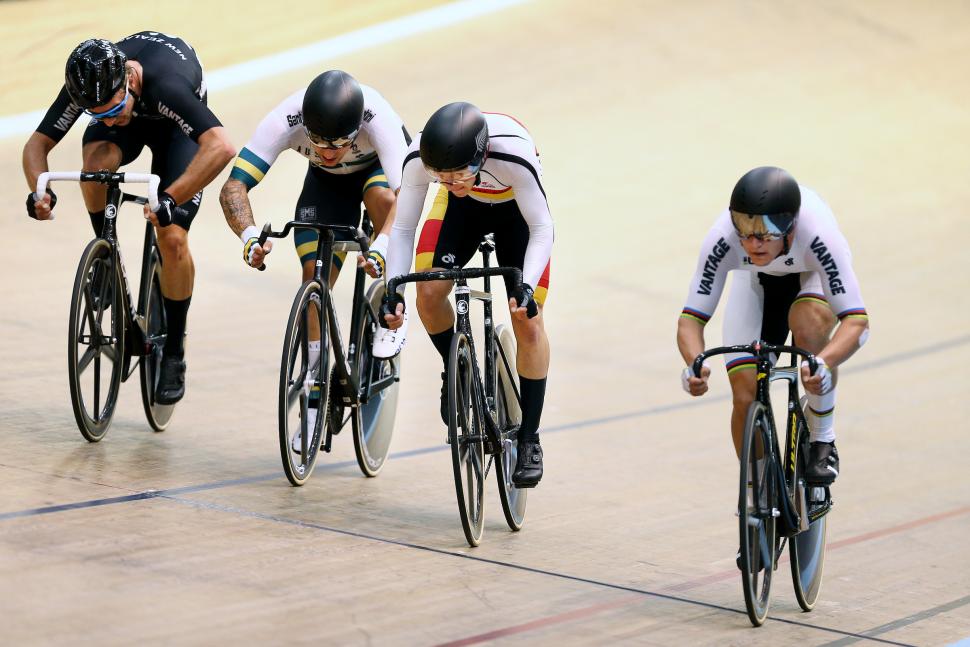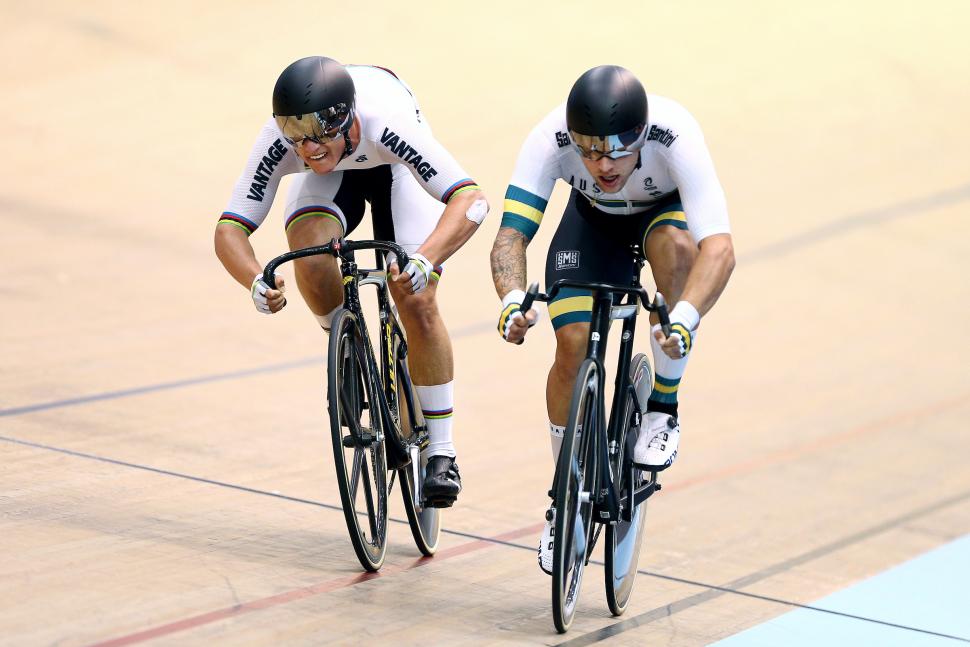- News
- Reviews
- Bikes
- Components
- Bar tape & grips
- Bottom brackets
- Brake & gear cables
- Brake & STI levers
- Brake pads & spares
- Brakes
- Cassettes & freewheels
- Chains
- Chainsets & chainrings
- Derailleurs - front
- Derailleurs - rear
- Forks
- Gear levers & shifters
- Groupsets
- Handlebars & extensions
- Headsets
- Hubs
- Inner tubes
- Pedals
- Quick releases & skewers
- Saddles
- Seatposts
- Stems
- Wheels
- Tyres
- Tubeless valves
- Accessories
- Accessories - misc
- Computer mounts
- Bags
- Bar ends
- Bike bags & cases
- Bottle cages
- Bottles
- Cameras
- Car racks
- Child seats
- Computers
- Glasses
- GPS units
- Helmets
- Lights - front
- Lights - rear
- Lights - sets
- Locks
- Mirrors
- Mudguards
- Racks
- Pumps & CO2 inflators
- Puncture kits
- Reflectives
- Smart watches
- Stands and racks
- Trailers
- Clothing
- Health, fitness and nutrition
- Tools and workshop
- Miscellaneous
- Buyers Guides
- Features
- Forum
- Recommends
- Podcast
TECH NEWS
 Madison_Bar_1(Credit-Dianne-Manson)
Madison_Bar_1(Credit-Dianne-Manson)Look out British Cycling, Australian track squad shows futuristic 3D printed handlebars and cranks for Tokyo 2020
Not to be outdone by the new Hope/Lotus track bike developed for the British Cycling track team, Australia’s Bastion has developed stunning 3D printed titanium handlebars and cranks for Cycling Australia as the race for Tokyo 2020 heats up.
Bastion is a name you might be familiar with if you’ve ever been to the Bespoked UK Handbuilt show, where it has shown bikes made from 3D printing titanium lugs with carbon fibre tubes.
It has now put this expertise to use in a new handlebar, stem and crankset for the Cycling Australia team to use in the Tokyo 2020 Olympics, provided it passes all the relevant tests and checks. The new stem, handlebar and crankset are designed to be used with the teams Argon 18 Electron Pro track bikes.
Bastion Advanced Engineering and Design (BAED), the division of Bastion Cycles responsible for the new components, has used Laser Powder Bed Fusion (LPBF) using Ti-6AL-4V (Grade 5) titanium combined with filament wound carbon fibre to produce the futuristic-looking components. The process has allowed Bastion to take Cycling Australia’s ideas for new components and quickly turn them into working prototypes.
The cranks have been designed to be aerodynamic, lightweight and extremely stiff. They’ve also integrated a wireless SRM power meter into the cranks. It’s a three-piece structure with each piece 3D printed from titanium, held together with titanium bolts and using infinitely variable alloy 7075 pedal inserts to adjust the crank arm length from 165 to 180mm.
“The stiffness benchmark targets were based on cranks previously used at the Olympic level, but are no longer available. We exceed the stiffness (N/mm at the pedal spindle) of these benchmark cranks by 16%,” explains James Woolcock, Engineering Director at Bastion
“The use of our hollow lattice and stressed-skin shell structure has pushed the weight down, the SRM plate alone makes up roughly 1/3rd the total assembly. Bearing running surfaces and pedal insert bores are post machined, but cinching splines, threads and all other features are ‘as-printed’. Surface finishing is a combination of vibratory rumbling, blasting and some other Bastion know-how,” he adds.
The Madison Bar to use its actual name has been designed to provide an optimal aerodynamic position by minimising the frontal surface area. The unique shape allows multiple hand and riding positions yet offers “stability and control when on the hoods” whilst also delivering a high level of stiffness. Like the cranks, the bars fully utilise 3D printed titanium.
“The motivation for the shape of these bars came from study done by Cycling Australia. They came to us with a first-cut concept that we have refined with prototypes back-and-forth between Bastion and Cycling Australia. With the ergonomics and shape nailed down, we got to work on the structural design and internal detail. Again the hollow lattice, stressed-skin strategy is employed along with stiffening ribs and optimised wall thicknesses to meet the stiffness targets,” explains James Woolcock, Engineering Director at Bastion.
The final component is the Sprint Stem, designed to connect the Madison Bar to the front of the Argon 18 Electron Pro track bike. It uses the regular 4-bolt interface as the conventional stem and bar so no special components or modifications are needed to the rather conventional frame. The stem is going to be available in various lengths up to 160mm with effective angles between +17/-17-degree as well as several stack heights.
It’s clear that Bastion and Cycling Australia have looked to focus on improving performance by reducing the frontal surface area of the rider with the distinctive handlebar, but using a regular track frame that has been raced previously in competition. The components also provide a wide range of fit adjustments and can be adjusted to suit different rides to ensure the aero optimisation of every athlete. It’s all-together a more conservative approach than British Cycling but the real test will be next summer.
The new components have received UCI approval and were used in Glasgow over the weekend in order to achieve the necessary acceptance from the UCI to be ridden at the Tokyo 2020 Olympics.
The Sprint Stem is available to order now and the bars and cranks will be available for order from 1st January 2020. More info at www.bastioncycles.com
David worked on the road.cc tech team from 2012-2020. Previously he was editor of Bikemagic.com and before that staff writer at RCUK. He's a seasoned cyclist of all disciplines, from road to mountain biking, touring to cyclo-cross, he only wishes he had time to ride them all. He's mildly competitive, though he'll never admit it, and is a frequent road racer but is too lazy to do really well. He currently resides in the Cotswolds, and you can now find him over on his own YouTube channel David Arthur - Just Ride Bikes.
Latest Comments
- rookybiker 46 min 35 sec ago
The trailer seems to connect to both ends of the rear axle. Can it do tight corners without dragging the tyre sideways?
- mattsccm 46 min 42 sec ago
Surely the answer is to ban urban traffic. This cobblers about wide vehicles squeezing down between two sets of parked cars would be easy to solve...
- froze 49 min 55 sec ago
Motorists have always been unkind to cyclists, but distracted driving is adding to the problem....
- Destroyer666 1 hour 43 min ago
Have you owned Bont shoes? In my experience even the widest Lake shoes have had a bizarre form of narrowing way too much in the toe area. But the...
- froze 2 hours 10 min ago
Not sure if this is possible, but this news letter goes out all over the world, and some places like Decathlon does not send stuff to America, in...
- Hirsute 2 hours 55 min ago
I'm confused as to why you'd need bib shorts indoors.
- Oldfatgit 3 hours 24 min ago
I'm sure you were being sarcastic... however ... Lewis Hamilton lives in Monaco. Yet another car driver that doesn't pay any tax
- BikingBud 5 hours 36 min ago
Paddington Harrow Road crash leaves two seriously injured...
- TheBillder 9 hours 2 min ago
I've had (past tense is deliberate) 3 of these over the past 5 years. I'm back here researching for a replacement as my last one broke last week. I...





Add new comment
4 comments
How can the pedal eyelet be "infinitely" adjustable, sorry but that's complete and utter nonsense, you do know what the word infinte means right? Widely variable between all the required crank lengths would be accurate.
Also to describe them as "stunning", not really, they look ugly and functional, the cranks external design at least isn't a huge step from the Zipp Vuma Crono's, Campag Bullet Ultra or the Vision metron track tbh, and the daddy in terms of "stunning" as far as aero cranks go is the Stronglight Ultim, no contest.
The bars are interesting, have a sense in design to the stepped bars in the gravel market, was it a Canyon?? I've already seen Aus riders resting their forearms on them which is not allowed from what I gather in track riding and can result in penalty.
Good luck to the ockers, or maybe not
That depends on whether you think that space is infinitely divisible - i.e. that between any two points in space there are an infinite number of intermediate points - or that space is quantized and that particles can only exist at discrete points in space separated by a constant amount, such as the Planck Length.
The Stronglight Ultim looks to me like what you get in a population that lives too close to a very strong radioactive source, or like Stoke-on-Trent without the glamour.
Eye of the beholder obviously
I was interested in the Madison bar but as can be seen from the pictures no rider is using them.
It seemed like a parformance gain but is of very limited benefit.